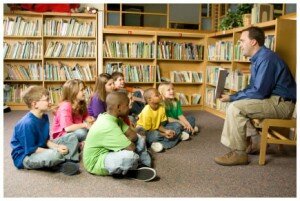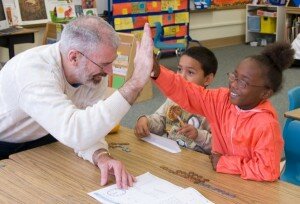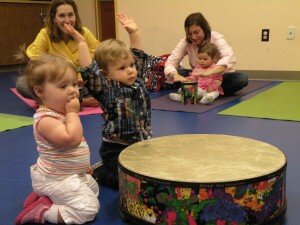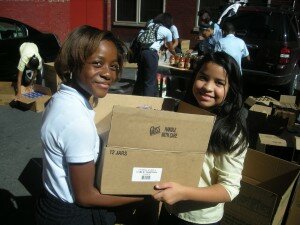 Mentoring relationships can be positive experience for students at any level in their school experience. Mentors can help young students get to know adults that aren’t their parents, and older students can benefit from the knowledge and talents that mentors can share with them.
Mentoring relationships can be positive experience for students at any level in their school experience. Mentors can help young students get to know adults that aren’t their parents, and older students can benefit from the knowledge and talents that mentors can share with them.
Mentoring relationships can be difficult, though. Here are some tips to help build a strong, positive mentoring relationship:
- Be patient. Your mentoring relationship is going to advance in stages. Students may not show that they’re benefiting from a relationship with you at first. Stick with it, though, your help may be just what a student needs.
- Praise is important. A word of praise for an achievement can show a student that not everything in the world is critical. Be positive and sincere in your praise, whether it’s for great achievements or small victories.
- Set boundaries. Being open in a mentoring relationship is important. Most mentoring relationships develop and flourish without problems. Occasionally, however, something comes up. Mentors have an important role, but this doesn’t include replacing family or social service professionals. A mentor can help guide a young person to the appropriate source for additional help that they might not be able to provide. If you’re not sure where to start, talk to the student’s teacher or principal.
- Try to understand the student’s point of view. Even if you don’t share his or her point of view, trying to appreciate it shows you care. Who knows, you might learn a different way of looking at the world.
- Celebrate differences. Experienced mentors report that working with a young person from a different background broadened their own horizons and deepened their understanding of other people and cultures. Sometimes it is the differences that make the difference.
- Be honest. We all know that nobody’s perfect. If you make mistakes, admit it. Say you’re sorry and learn from it. It’s a skill a child may only learn from you.
- Be there. Just the sound of your concerned voice can make a big difference in the life of a child. You don’t have to be able to fix all of their problems, but being able to listen to them can go a long way towards making things better.
- Be positive. Ask yourself, “What encouragement can I give if my young friend disappoints himself or herself?” Mentors are in the business of helping young people make the most of their lives. Allow the child to make a few “growing” mistakes when they learn new things.
- Believe. Many children in our communities struggle with self-esteem. Your faith in them can be the greatest gift you can give.


 Stronger ties to the community
Stronger ties to the community
 Give a boost to a school club. In the era of disappearing recess and music and arts programs, schools may need help providing these kinds of classes. If your child is involved with any clubs or activities at school, call the person in charge of the group and see if you can help with transportation, supplies, or planning.
Give a boost to a school club. In the era of disappearing recess and music and arts programs, schools may need help providing these kinds of classes. If your child is involved with any clubs or activities at school, call the person in charge of the group and see if you can help with transportation, supplies, or planning. Start a cleanup crew. Are crushed soda cans and scrap paper taking over the school grounds? Why not plan a school cleanup day? Include parents, students, teachers, and any community members who want to help. Participants will feel a sense of ownership and will be less likely to ignore litter in the future.
Start a cleanup crew. Are crushed soda cans and scrap paper taking over the school grounds? Why not plan a school cleanup day? Include parents, students, teachers, and any community members who want to help. Participants will feel a sense of ownership and will be less likely to ignore litter in the future. Today’s post comes from Davida Gatlin, Manager, Training and Technical Assistance for
Today’s post comes from Davida Gatlin, Manager, Training and Technical Assistance for  Participation in service-learning…
Participation in service-learning…



 Want to save energy while leaping tall buildings in a single bound? Turn off the boob tube and play outside.
Want to save energy while leaping tall buildings in a single bound? Turn off the boob tube and play outside.
 Whip up your favorite yummy snack and present it to a soup kitchen!
Whip up your favorite yummy snack and present it to a soup kitchen!

 Neighboring is an asset- and empowerment-based approach that engages underserved and underresourced community members to find innovative, sustainable solutions to address local challenges. Asset-based refers to the acknowledgment that all members of a community can offer something to improve the community: talents, skills, knowledge, or resources. The resident-led approach primarily focuses on a specific geographic area (i.e., ZIP code, neighborhood, or street) in which the majority of the volunteers, activities, and organization come from within a community.
Neighboring is an asset- and empowerment-based approach that engages underserved and underresourced community members to find innovative, sustainable solutions to address local challenges. Asset-based refers to the acknowledgment that all members of a community can offer something to improve the community: talents, skills, knowledge, or resources. The resident-led approach primarily focuses on a specific geographic area (i.e., ZIP code, neighborhood, or street) in which the majority of the volunteers, activities, and organization come from within a community.

